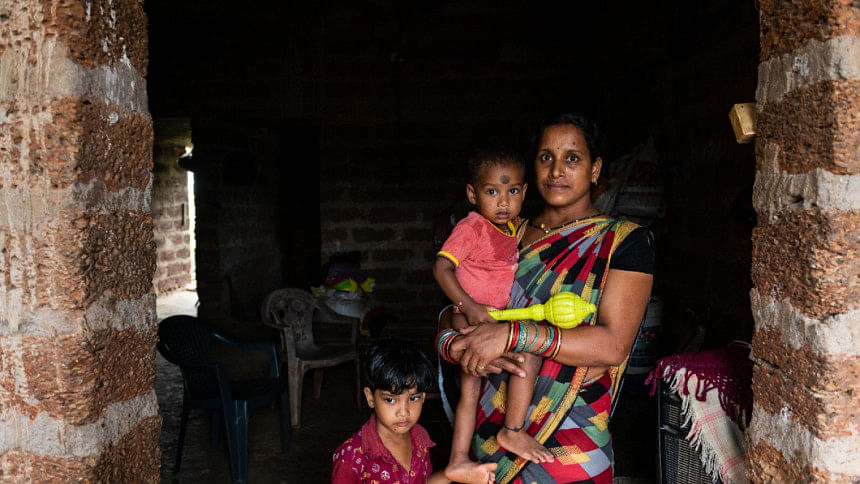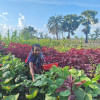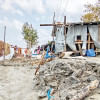Are Asia’s social protection systems ready for the shock of climate change?

Asia and the Pacific is the most disaster-prone region in the world. It also happens to be the most populous, leaving it disproportionately vulnerable to the impacts of climate change. In fact, of the 10 countries most affected by climate change in the last 20 years, six are in Asia.
While poor communities in Asia have contributed the least to global warming, they are now experiencing the worst of the climate crisis. On average, over 40,000 people in the region are killed every year by storms, floods, and other natural disasters. Women and girls bear the highest burden, being 14 times more likely to die in climate-related disasters than men.
In Bangladesh alone, nearly 18 million people living in coastal areas will lose their homes if sea levels rise by just one metre. The combination of densely populated urban and coastal areas, low-lying land, and many small islands means that countries in developing Asia will continue to be at severe risk of climate change. Indeed, every aspect of life, from health and nutrition to safety and income, will be affected.
So, what does all this mean for social protection?
Social protection measures are a necessary tool to build resilience and protect the most vulnerable following climate, health, and socio-economic shocks. They can also play an important climate mitigation role, including through skills training and public works that promote sustainable use of natural resources. Ethiopia's Productive Safety Net Programme, for example, employs more than 8 million people in a labor-intensive public works programme that rehabilitates land and natural resources. The programme increased tree cover by 3.8 per cent from 2005 to 2019, plausibly contributing to reduced global warming.
The pandemic underscored the importance of having strong social protection systems in place. By January 2022, a total of 900 social protection measures (led by cash transfers) were planned or implemented by 44 developing economies around Asia and the Pacific. These measures not only mitigated income and job losses, but also helped avoid millions of COVID-19 cases and related deaths. Countries like Pakistan, Cambodia, Philippines, and Mongolia scaled up social assistance in unprecedented ways and used innovative digital tools to deliver timely support to households.
However, as we emerge from the immediate crisis period, building adaptive and shock-responsive social protection systems has become more important than ever before.
Shock-responsive social protection systems anticipate, mobilise, and rapidly expand in the instance of a shock or crisis to deliver vital income support to households. Adaptive social protection takes shock-responsiveness one step further by building the longer-term resilience of communities to a range of shocks and underlying vulnerabilities, including natural disasters, slow-onset hazards intensified by climate change, economic crises, pandemics, conflicts, and forced displacement.
It does this by investing in the capacity of vulnerable households to "prepare for, cope with, and adapt to shocks", ensuring that they do not get trapped in a cycle of poverty.
By integrating the tools of social protection, such as social assistance and cash transfers, with disaster risk management, climate change, and humanitarian response measures, adaptive social protection systems can build resilience to climate change.
The following five steps can help countries in Asia strengthen the role of social protection in climate adaptation and mitigation.
Build universal delivery systems that allow automatic and efficient expansion of social protection to vulnerable populations. This includes universal coverage of digital ID systems and social registries; strengthening on-demand registration options for vulnerable groups; improving integration and interoperability of large-scale databases including early warning systems to predict needs and promote timely action; and establishing robust payment mechanisms. Expanding e-payment systems, including bank accounts and mobile wallets, has the additional benefit of improving financial inclusion and savings, which is necessary for building resilience.
Expand coverage of social protection to the most vulnerable, including children, women, older persons, disabled people, and those in the informal sector. These groups are hit hardest by shocks and are often excluded from any form of adequate social protection. Though expansion in coverage will involve trade-offs and fiscal considerations, there is sufficient evidence documenting the positive multiplier effects of social transfers on the economy. The cost-effectiveness of these programmes, particularly when they enable the poor to recover from shocks quickly or avoid adverse coping behaviors, can be substantial.
Undertake poverty, risk, and vulnerability assessments to inform beneficiary selection. Improving household capacity to absorb shocks requires adjusting targeting approaches and understanding household needs beyond just limited income. This means integrating household and community exposure to shocks and climate risks as well as other vulnerabilities into eligibility criteria. In addition to routine vulnerability assessments of at-risk sectors, geographic areas, and population groups, careful climate change forecasting can help identify the timing and intensity of climate hazards. Together, these tools will better position governments to deploy necessary human and financial resources before and after shocks occur.
Design "climate-smart" social protection systems to support climate adaptation and mitigation. These include shock and weather-indexed insurance schemes, economic inclusion (graduation) programmes that help to diversify livelihoods, and temporary social assistance linked to skills training for vulnerable workers. In the Philippines, an ADB-supported pilot of the graduation approach strengthened household resilience to the pandemic across a range of dimensions including financial security, food security, and mental health. Environmentally friendly public works programmes that provide payments to communities for ecosystem services such as reforestation also offer strong promise as an environmental conservation, climate mitigation, and poverty-reduction tool. In Burkina Faso, participants in a cash-for-work programme planted and maintained indigenous trees on degraded land and benefited from increased food consumption and reduced food insecurity.
Strengthen policy coherence, coordination, and collaboration among social protection, climate change, disaster risk management, and humanitarian response actors. Mechanisms such as multisectoral technical working groups, national coordination frameworks, and standardised guidelines can help define the roles and responsibilities of different actors, monitor progress, and advance the social protection agenda. Finally, countries must invest in the human and financial capacity required to make social protection systems more adaptive.
Social protection programmes recently demonstrated their critical importance during one of history's most unprecedented crises. It is time to expand their use to address the impact of climate change on society's most vulnerable.
The author is a social sector specialist of the Southeast Asia Department of the Asian Development Bank.

 For all latest news, follow The Daily Star's Google News channel.
For all latest news, follow The Daily Star's Google News channel. 








Comments